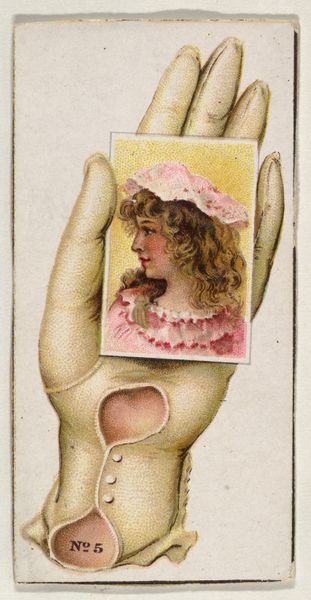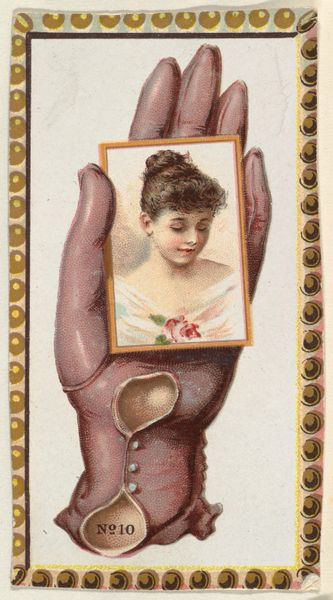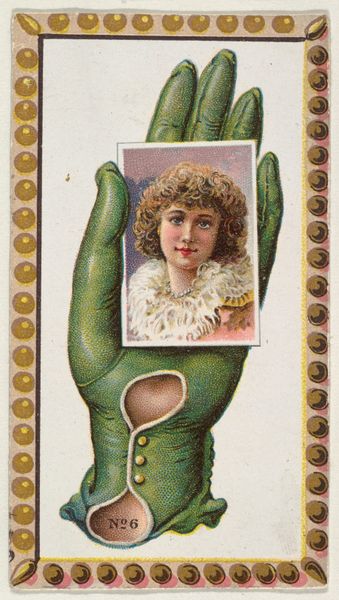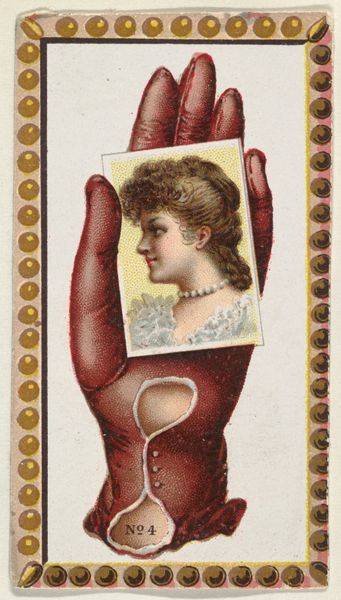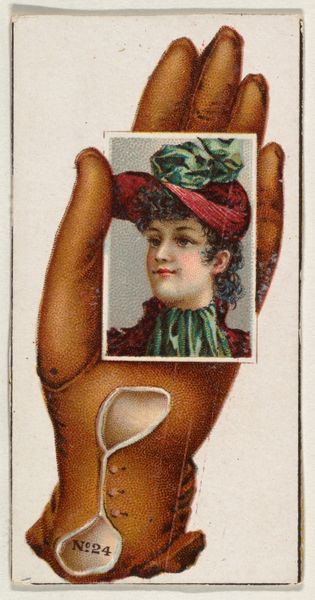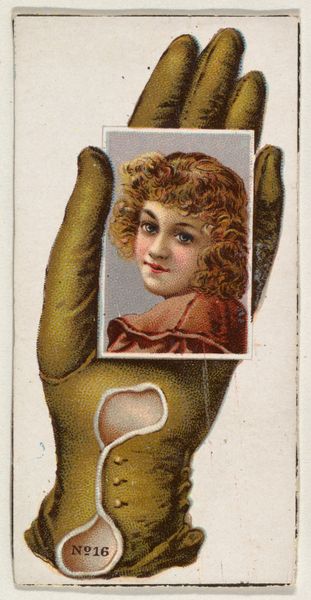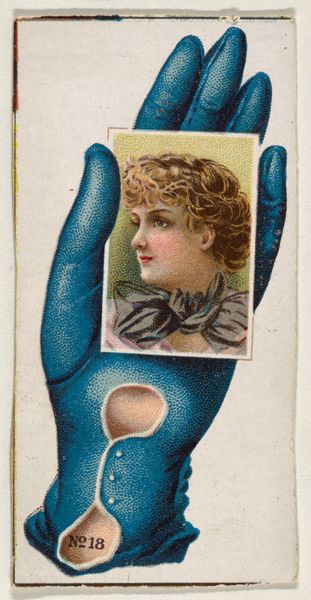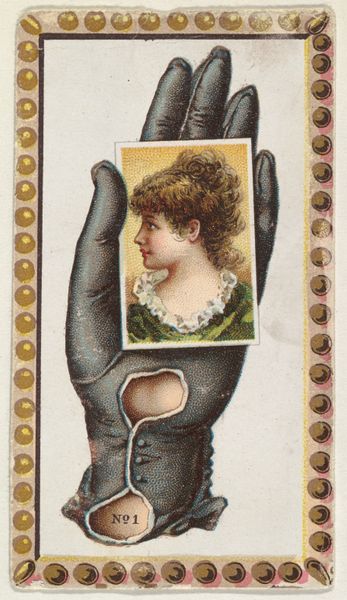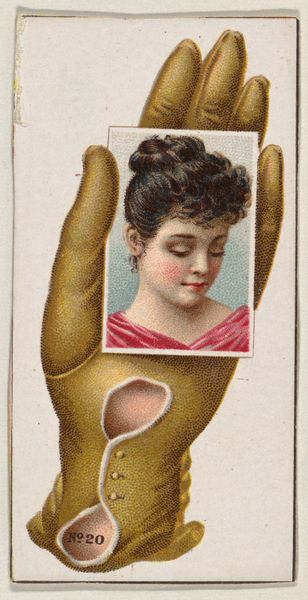
Card Number 7, cut-out from banner advertising the Opera Gloves series (G29) for Allen & Ginter Cigarettes 1885 - 1895
0:00
0:00
drawing, coloured-pencil, print
#
portrait
#
drawing
#
coloured-pencil
# print
#
coloured pencil
#
miniature
Dimensions: Sheet: 3 1/8 x 1 3/4 in. (8 x 4.5 cm)
Copyright: Public Domain
Curator: So, what do you make of this oddity? It feels Victorian-whimsical and unsettling all at once. Editor: A peculiar composition! The stark, glove-like form feels so imposing, especially contrasted against that delicately rendered portrait... Tell me more about the piece itself. Curator: We're looking at a cut-out from an Allen & Ginter cigarette advertising banner, dating somewhere between 1885 and 1895. It’s named “Card Number 7, cut-out from banner advertising the Opera Gloves series (G29)." It seems to be some sort of colored pencil and print combination. I think this particular advertisement lives at the Metropolitan Museum. Editor: Opera gloves! I see it now—the hourglass shape, the suggestive openings… Is that supposed to be flesh peeking through, implying bare skin beneath the glove? A daring little detail, really. And the color palette… almost a premonition of Art Nouveau in its delicate ornamentation. Curator: The juxtaposition is pretty heavy-handed, isn't it? A kind of fetishized presentation of upper-class women from the Gilded Age: contained and objectified simultaneously, almost a snuff card, like death being embraced by this fashion portrait. It is giving me some major side-eye here. I also note it’s from a cigarette company! Who decided to put a proper portrait in such close context to addiction, violence, death, cancer…? How very morbid! Editor: Morbid indeed! However, what about seeing this as more playful, rather than sinister? The miniaturized portrait seems less like a real woman, more of an icon – packaged luxury and refined beauty reduced to an consumable, purchasable image for the growing bourgeois. The gloves are but the holders for such. Curator: Interesting point. It certainly shifts my perspective on it. But that knowing gaze of the woman in the portrait keeps me hesitant. It feels like a winking subversion of those very values, packaged by and sold from these tobacco purveyors. Maybe there's just something inherently contradictory about the whole era that manifests itself perfectly here. Editor: Contradiction might be the key element. Looking at it one last time, what resonates most is that ambiguity between art and commodity. Something we're probably still grappling with today.
Comments
No comments
Be the first to comment and join the conversation on the ultimate creative platform.


